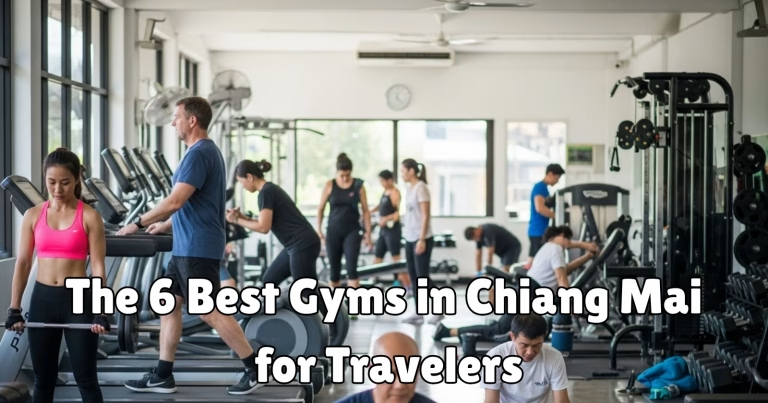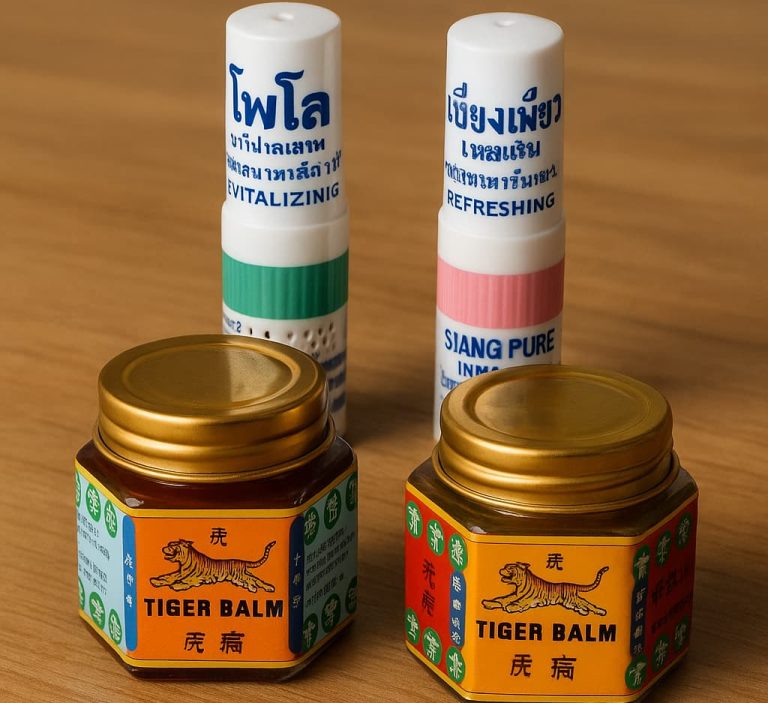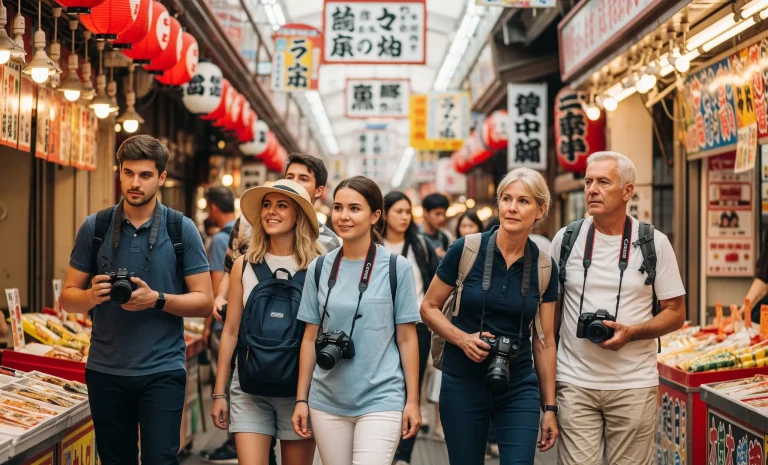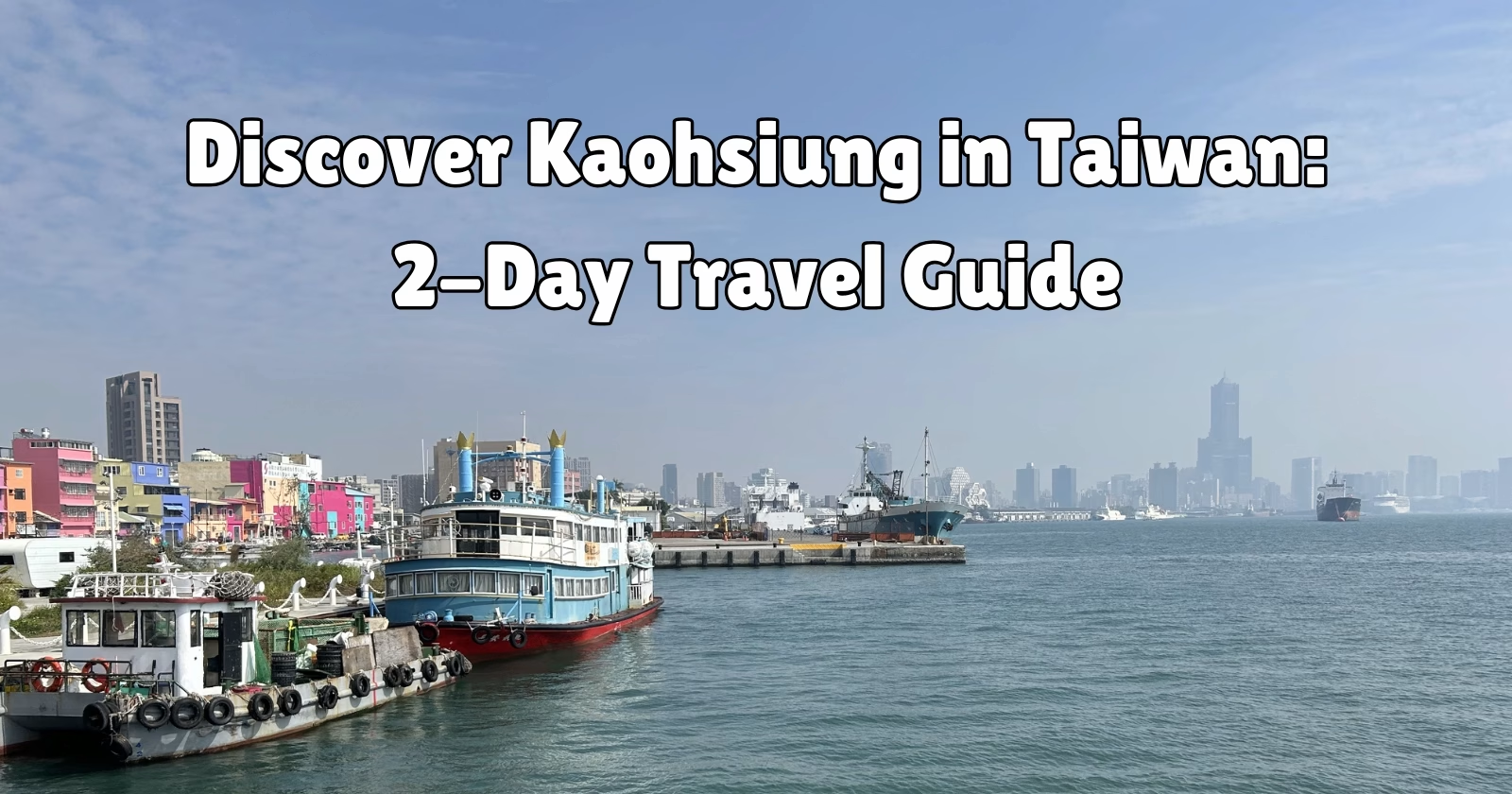
Are you planning a trip to Taiwan and considering only Taipei? While the capital is undoubtedly vibrant, you’d be missing out on a quieter, equally enchanting gem down south. To truly discover Kaohsiung in Taiwan, you need a savvy traveler’s playbook. This guide isn’t just about what to see; it’s about how to navigate Taiwan’s second-largest city efficiently, affordably, and with the confidence of an experienced local.
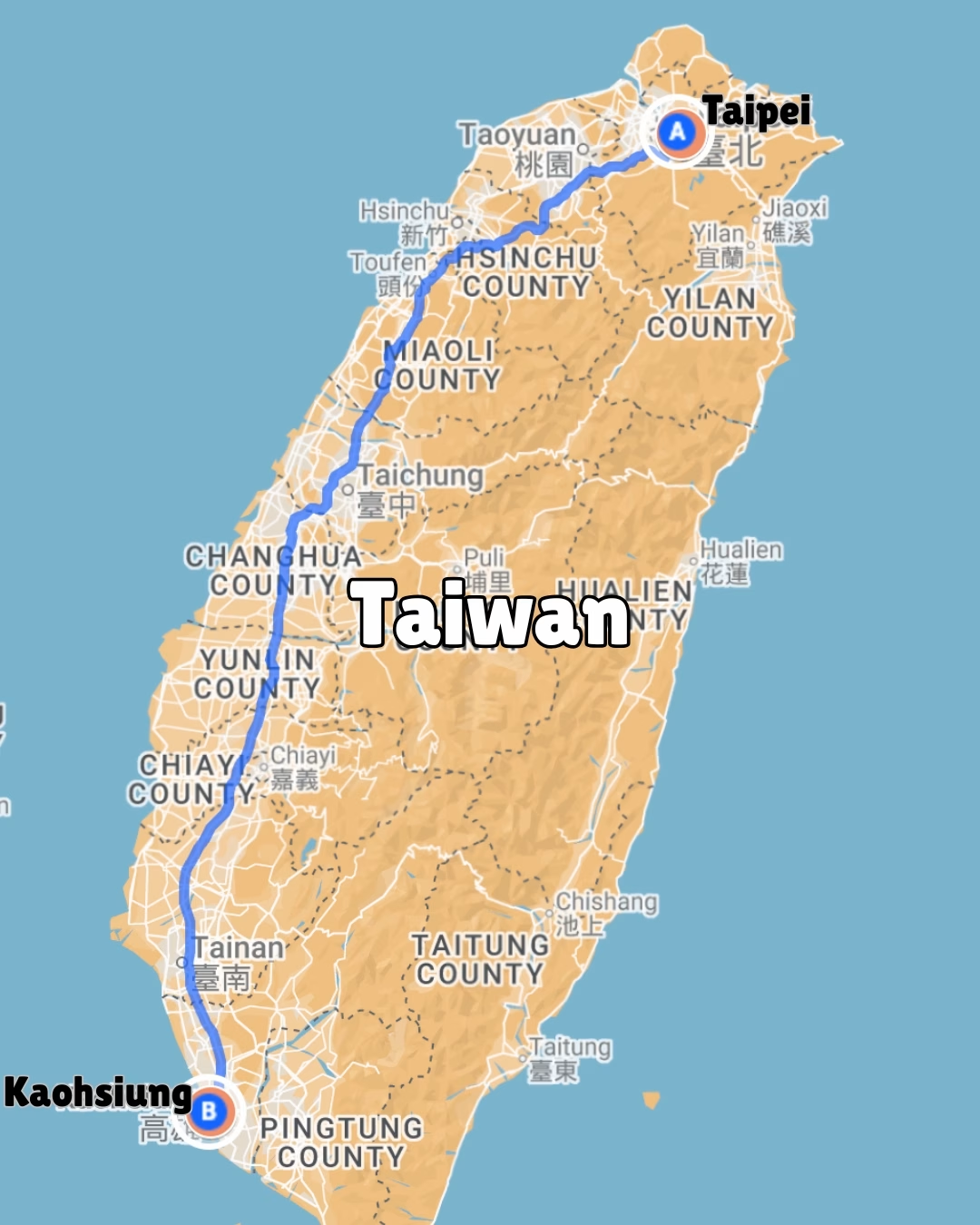 My ultimate 2-day travel guide is here to ensure you unlock Kaohsiung’s charm without the usual tourist pitfalls, letting you soak in its unique atmosphere. Taiwan’s High-Speed Rail (HSR) is your best friend for connecting cities like Taipei and Kaohsiung. My partner and I opted for the HSR, and in a comfortable three hours, we seamlessly transitioned from the bustling north to Kaohsiung’s more relaxed pace.
My ultimate 2-day travel guide is here to ensure you unlock Kaohsiung’s charm without the usual tourist pitfalls, letting you soak in its unique atmosphere. Taiwan’s High-Speed Rail (HSR) is your best friend for connecting cities like Taipei and Kaohsiung. My partner and I opted for the HSR, and in a comfortable three hours, we seamlessly transitioned from the bustling north to Kaohsiung’s more relaxed pace.
Booking tickets in advance, especially during peak travel times or holidays, is a smart move. Websites like Klook or the official HSR site allow you to secure your seats and even get discounts. This avoids queues and ensures you get the exact train time you want, giving you more precious travel hours. Remember, showing up at least 15-20 minutes before departure is wise to find your platform and settle in. Trust me, arriving late to an HSR station is a frantic experience you don’t want to add to your travel memories!
While Taipei dazzles with its towering skyscrapers, frenetic night markets, and world-class museums, Kaohsiung offers a different rhythm and texture. Imagine trading dense urban canyons for sweeping harbor vistas, subway crowds for breezy waterfront promenades, and misty mountain backdrops for palm-lined streets and ocean sunsets. Kaohsiung feels open, laid-back, and effortlessly cool. It’s a city that transformed its industrial past (think old warehouses, shipyards) into dynamic creative hubs. The pace is noticeably slower, the air warmer, and the vibe more Mediterranean-meets-tropical than Taipei’s high-energy buzz.
Kaohsiung City, Day 1
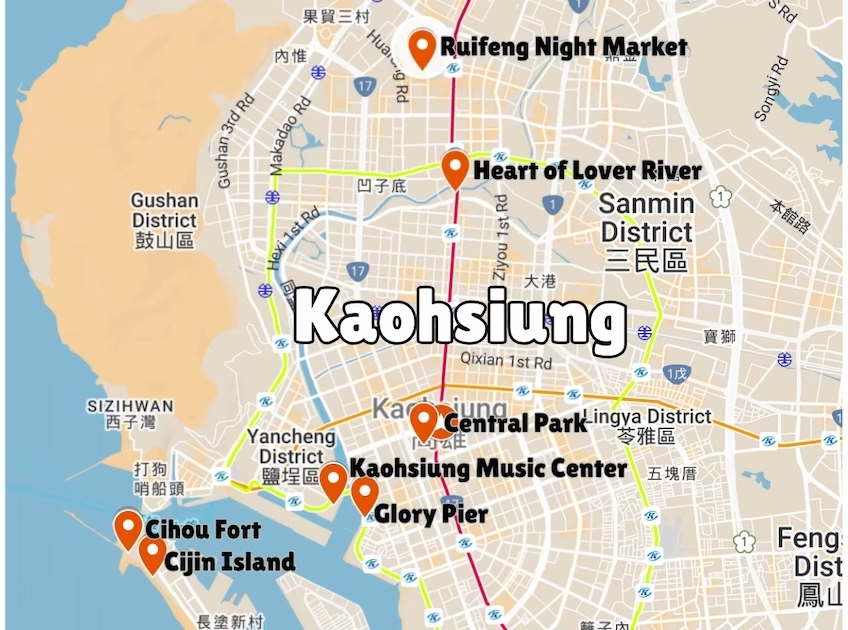
Our stay at the Greet Inn Hotel in Kaohsiung was an absolute highlight of our trip. From the moment we stepped into the sleek, contemporary lobby, we knew we’d chosen well. The hotel radiates a cool, minimalist vibe – think clean lines, thoughtful lighting, and a calming neutral palette – but never feels sterile. Our room was a genuine surprise: spacious, thoughtfully designed, and incredibly comfortable.
Just a short and pleasant few minutes’ walk from our hotel’s doorstep 大骨麵dagoodman-好男人系列, where we enjoyed one of our most memorable dinners in the city. The ease of simply strolling over, no need for taxis or complicated navigation, added to the relaxed evening vibe. DaGoodMan lived up to its promising name! The atmosphere struck a perfect balance – lively enough to feel energetic, but not overwhelmingly noisy, with warm lighting and stylish, rustic-industrial decor. 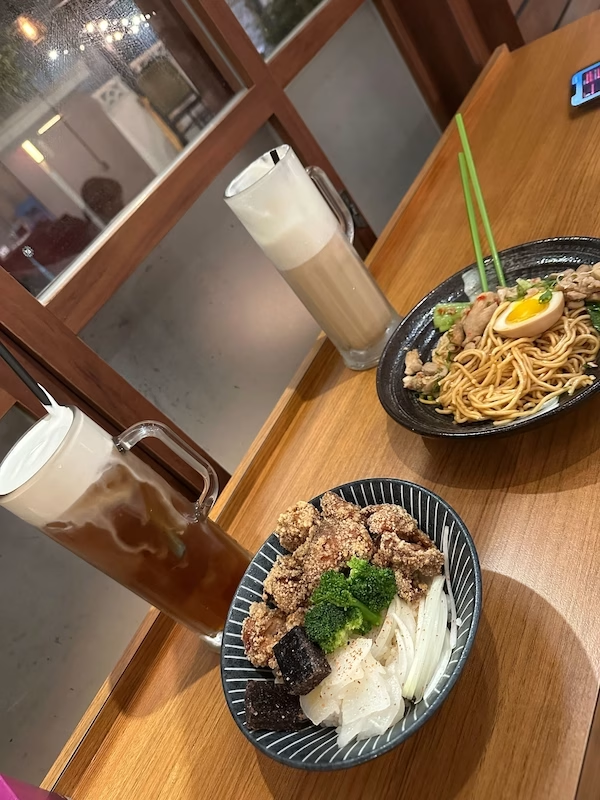 We had their Taiwanese chicken and spicy chicken noodles, which were simply delightful, paired with surprisingly large jugs of milk tea. This approach to dining—seeking out places packed with locals rather than those with English menus plastered outside—is a core principle of savvy travel.
We had their Taiwanese chicken and spicy chicken noodles, which were simply delightful, paired with surprisingly large jugs of milk tea. This approach to dining—seeking out places packed with locals rather than those with English menus plastered outside—is a core principle of savvy travel.
The rationale is simple: locals know where the good, affordable food is, and they vote with their feet. Don’t be afraid to point at dishes or use translation apps; the reward is often a truly pleasant meal that reflects the heart of the city’s cuisine.
After our satisfying meal, with newfound energy, we embarked on our first evening stroll. One of the initial discoveries you’ll make about Kaohsiung is its uncrowded nature compared to Taipei. This makes walking through the city center all the way to the Heart of Love River an incredibly pleasant experience.
You hear the name everywhere in Kaohsiung, but honestly? I thought it might be a bit… touristy. Oh, how wrong I was! Especially down at the “Heart of Love River” area. It wasn’t just nice – it was this unexpectedly peaceful, stylish, and utterly charming urban oasis. Let me paint the picture:
First off, finding it feels cool. You’re buzzing through the city streets (maybe on the MRT, maybe in a cab), past all the usual urban sprawl, and then… bam. You step out near Bo’ai Road and Minsheng Road, and this graceful, looping bridge appears over calm, reflective water. It’s like Kaohsiung decided to take a deep breath and create something beautiful right in its middle.
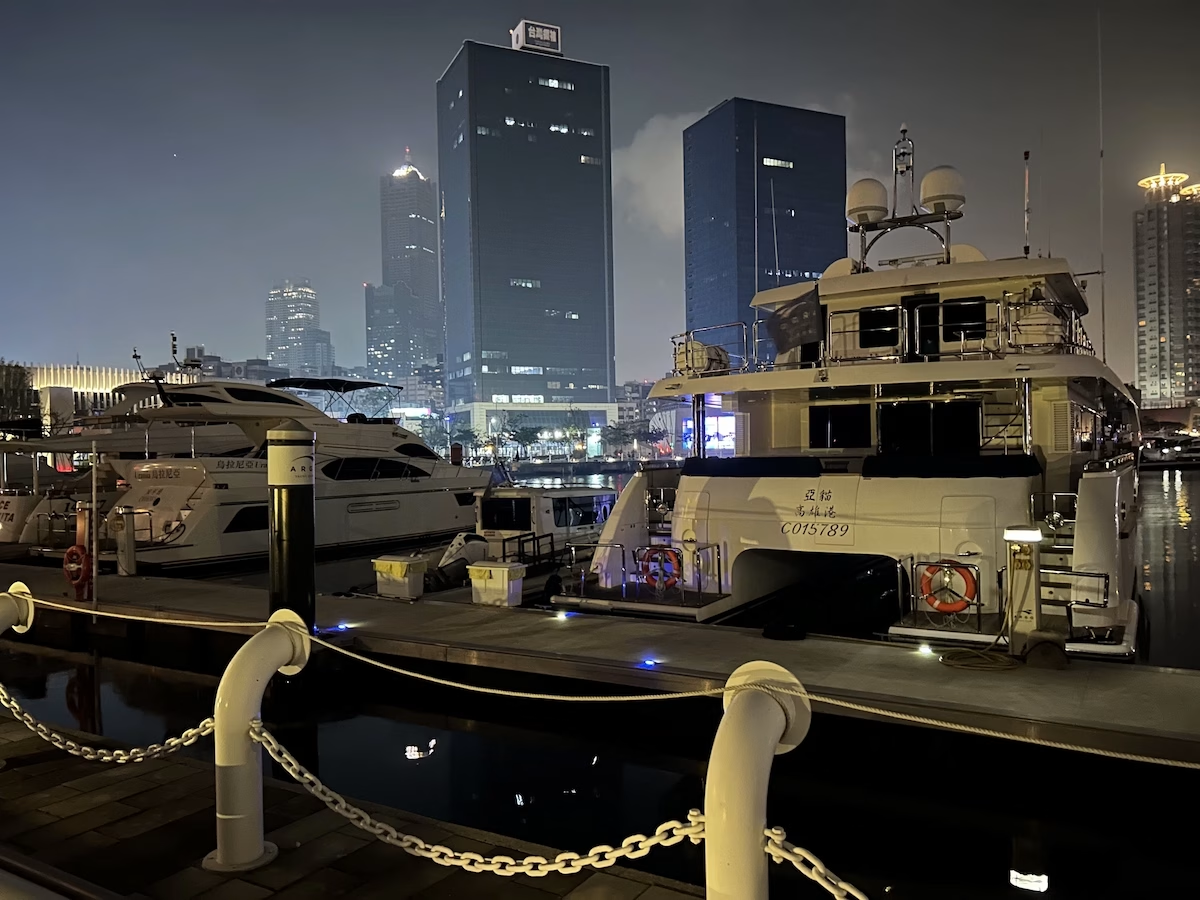
The Heart itself (愛河之心) is actually two connected artificial lakes shaped like a heart (hence the name!), linked by a stunning S-shaped pedestrian bridge. Walking onto that bridge? Instant good vibes.
The air is fresher, the sidewalks are wider, and there’s a gentle hum rather than a roaring din. It’s a tranquil oasis perfect for unwinding after a day of travel. From the river, we meandered to Central Park, which transforms into a spectacle of lights at night. These evening walks aren’t just for sightseeing; they are excellent opportunities to observe local life, discover hidden alleys, and stumble upon street art or performers. Always have your preferred offline map application ready, but also allow yourself to get a little ‘lost’—that’s often where the real magic happens.
My anecdote from this first evening illustrates a common travel lesson: sometimes, the best experiences are the unexpected ones. I recall us walking past what looked like a typical bubble tea shop near Central Park. Instead of walking past, we decided to give it a try. What we found was not just another bubble tea, but a small, family-run stall where the owner enthusiastically mixed a custom concoction for us, purely based on our vague “something sweet but refreshing” request. It wasn’t on any map, nor was it particularly famous, but that small interaction and delicious, personalized drink became a memorable highlight, reminding me that being open to spontaneous detours can lead to the most authentic connections and flavors. It’s a key hack for independent travelers: always leave room for serendipity.
Kaohsiung City, Day 2
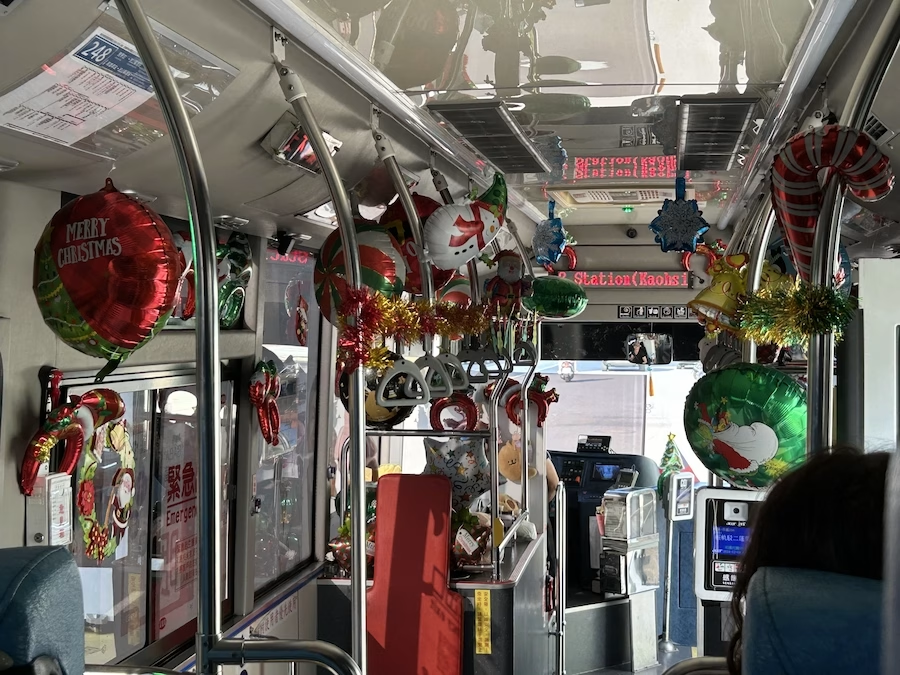
The second day was dedicated to Cijin Island, a must-visit for any Kaohsiung itinerary. Getting there is an adventure in itself, but an easy one if you know the drill. We took a local bus to the Gushan Ferry Pier. Using Kaohsiung’s public transport, primarily its MRT and bus system, is incredibly efficient and budget-friendly.
Purchase an EasyCard (available at MRT stations or convenience stores like 7-Eleven), top it up, and you’re good to go. This card works across Taiwan’s major cities and saves you the hassle of fumbling for change for every ride. It’s a small investment that pays dividends in convenience and budget travel. Once at the pier, boarding the ferry to Cijin is straightforward; just follow the crowds. The ride itself is short, offering lovely views of the harbor and the cityscape receding behind you.
Upon arriving on Cijin, you’ll find a lively atmosphere. We strolled around Cijin Old Street, where the aroma of grilled seafood fills the air. This is the perfect spot to try local delicacies. Don’t hesitate to sample; many vendors offer small portions. From the old street, we headed towards the Cijin Tunnel, a dark, cool passage leading to the coast.
So, picture this: You’ve just wandered through the bustling Cijin seafood street (maybe grabbed a quick skewer!), and instead of heading straight to the main beach, you see signs pointing uphill towards “Cihou Fort.” Curiosity piqued, you start the walk up. It’s not super strenuous, maybe 10-15 minutes on a paved path winding through trees, but you definitely feel like you’re leaving the crowds behind. There’s a sense of anticipation!
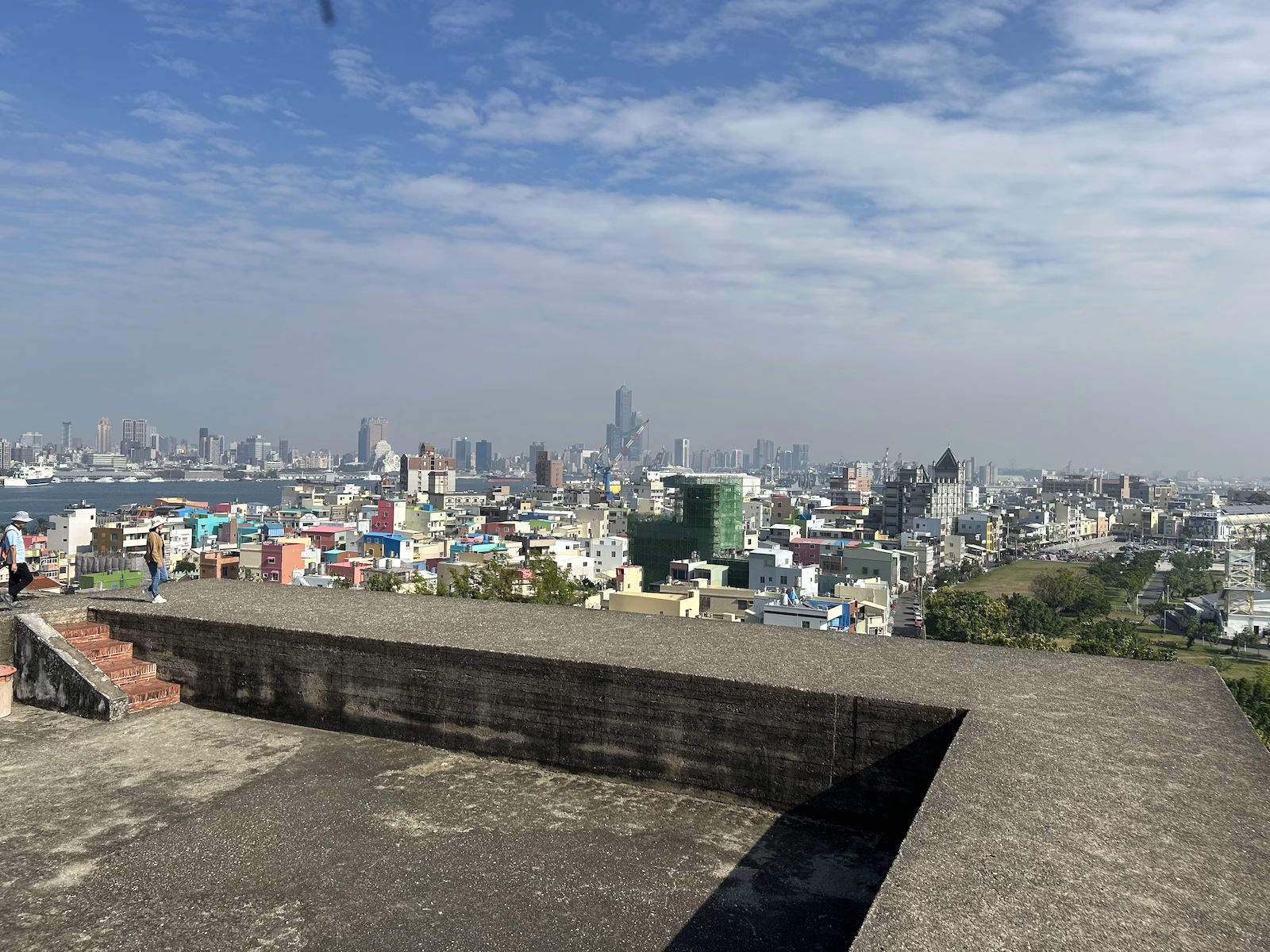
Suddenly, you emerge at this ancient stone fortress nestled right into the hillside. It’s not a massive, overwhelming castle, more like a weathered, charming old guardian keeping watch. You instantly feel the history – those thick, moss-touched walls have seen centuries! (They say parts date back to the Dutch and Spanish in the 1600s, rebuilt by the Qing Dynasty, and later used by the Japanese!). You can almost imagine soldiers peering out to sea.
Exploring the fort itself is delightfully compact. You wander through arched gateways, scramble up onto the ramparts (carefully, the stones are old!), and peek into old barracks rooms and storage areas. The star attractions are definitely the original cannons still pointing defiantly out over the Taiwan Strait! Standing next to one, looking down its barrel towards the vast blue ocean… it gives you chills thinking about its history.
But honestly? The absolute highlight is the VIEW. Oh my gosh! Because you’re up on this headland, you get this incredible 270-degree panorama.
Emerging from it brings you to the Coral Reef Cliff, a natural wonder that offers a stunning backdrop for photos. While tempting to rush, take your time here. The tranquility allows you to appreciate the raw beauty of Taiwan’s coastline. From there, a leisurely walk led us to the Kaohsiung Lighthouse, perched atop a hill, offering panoramic views of the ocean and the city. It’s a relatively easy climb, but comfortable shoes are a must. 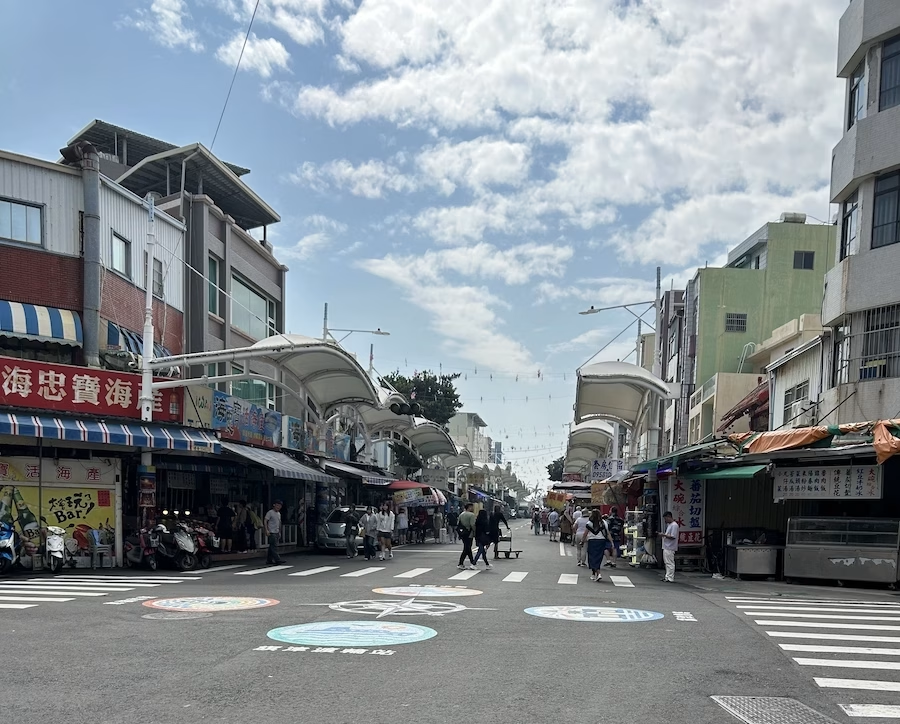
“You go away for a long time and return a different person – you have been into the great machine, and it has stamped you.”
Returning from Cijin in the afternoon, we refreshed ourselves for another evening of exploration. Kaohsiung truly shines at night. Our destination was Glory Pier and the stunning Kaohsiung Music Center. The architecture of the Music Center is a modern marvel, and seeing it lit up against the night sky is breathtaking. What truly captured us, however, was the atmosphere. The wind breeze was lovely, offering a respite from the day’s warmth, and you could see locals leisurely riding their bicycles by the river, a picture of serene urban life. This highlights an important tip for adapting to local rhythms: observe how locals unwind. If they’re strolling or cycling by the river, join them. It’s an authentic way to experience the city’s pulse and often leads to quieter, more contemplative moments away from the typical tourist bustle.
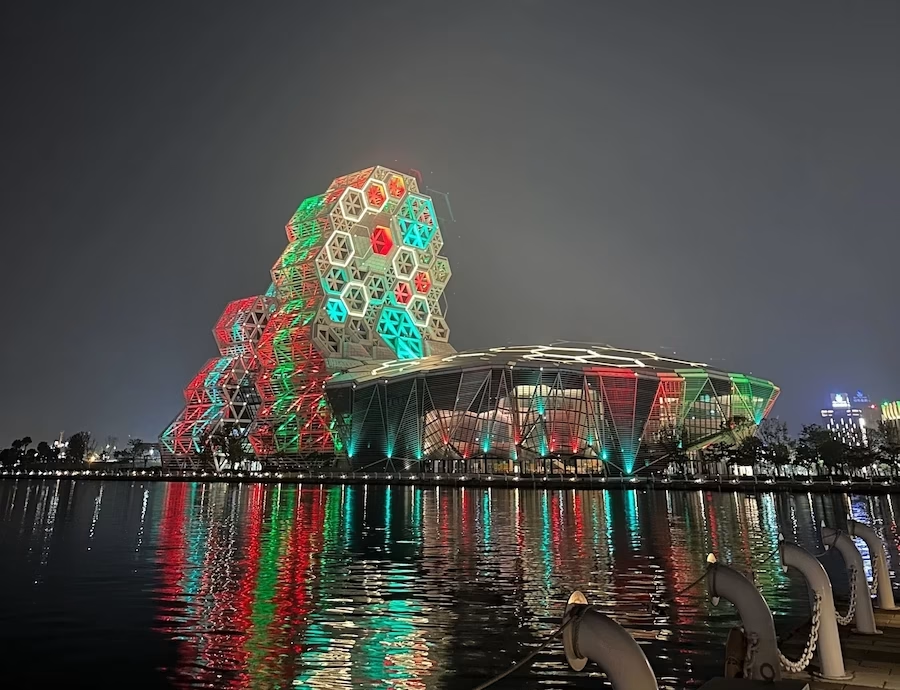
For dinner on our second night, we ventured into the organized chaos of . Night markets in Taiwan are an absolute sensory delight and a cornerstone of the local food scene. To conquer them like a pro, here are a few pointers: go with an open mind and an empty stomach. Don’t commit to one stall; graze! Try small portions from multiple vendors.
Look for queues – a long line often indicates a popular, delicious, and safe choice. While many vendors may not speak English, pointing and holding up fingers for quantity works wonders. This is also a fantastic opportunity to try some of Southeast Asia’s strangest but tastiest foods, should you be feeling adventurous. Ruifeng, being one of Kaohsiung’s largest, offers everything from grilled squid and stinky tofu to fresh fruit juices and sweet treats. It’s a masterclass in street food and an experience that truly immerses you in the local culture.
Throughout our visit, Kaohsiung proved to be a lovely surprise. I had initially imagined a city dominated by towering buildings and a relentless urban grind, much like many other major Asian metropolises. Instead, I found a quieter, more spacious urban environment where the presence of locals felt more pronounced than the tourist crowds. It was very quiet, yet there were still so many things to discover, from its serene parks to its lively night markets and coastal escapes. This low-key charm is precisely why Kaohsiung is an ideal destination for those looking to experience Taiwan beyond the well-trodden paths of Taipei. It offers a more authentic, relaxed pace, proving that sometimes, the greatest adventures lie in exploring the less obvious choices. This city’s relaxed vibe encourages you to slow down and truly absorb your surroundings, a luxury often missing in faster-paced travel. 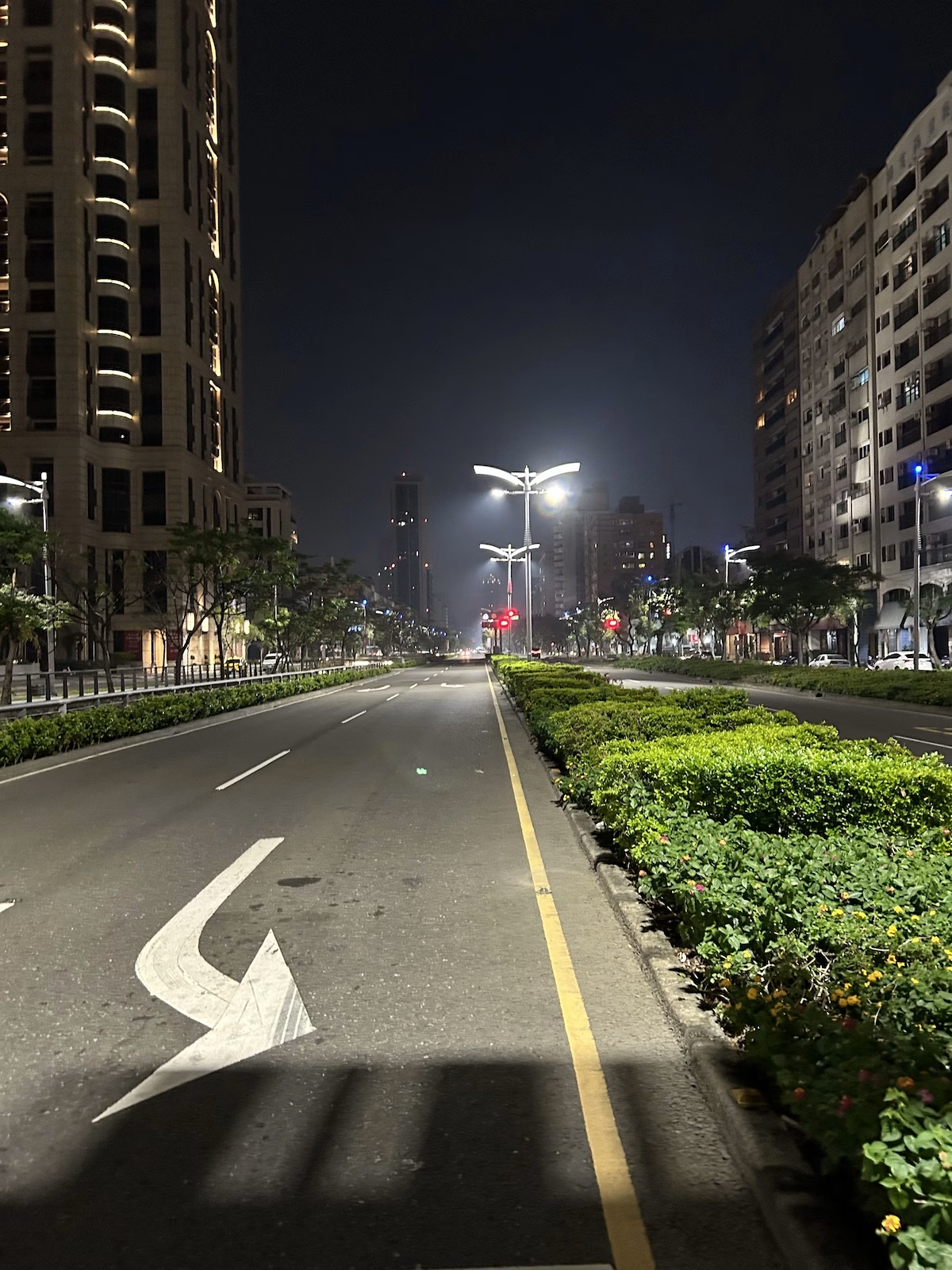
For those looking to extend their stay in Taiwan, or even considering a longer-term visit, understanding the local scene is paramount. For instance, cities like Kaohsiung, with their more relaxed atmosphere and lower cost of living compared to Taipei, can be appealing for various types of travelers, including digital nomads. Getting a local SIM card upon arrival, for example, is a crucial step for seamless navigation, communication, and access to ride-sharing or food delivery apps. Taiwan’s public Wi-Fi is generally good, but a local SIM ensures consistent connectivity.
Another essential tip is to carry some cash, especially for night markets and smaller local eateries that might not accept cards. While credit cards are widely accepted in department stores and chain restaurants, local joints often operate purely on cash. This is a common Asia airport survival hack that extends into daily city exploration.
Moreover, consider the power of basic Mandarin phrases. Even a simple “Ni hao” (hello), “Xie xie” (thank you), and “Duoshao qian?” (how much is it?) can significantly enhance your interactions with locals. The Taiwanese people are incredibly friendly and appreciate the effort. This not only makes your journey smoother but also opens doors to more meaningful cultural exchanges, allowing you to connect on a deeper level than just being a transient tourist. Investing a few minutes in learning these phrases can transform your experience, fostering genuine smiles and helpful responses that make all the difference. Remember, being a respectful tourist goes a long way in any culture.
Such A Lovely Experience
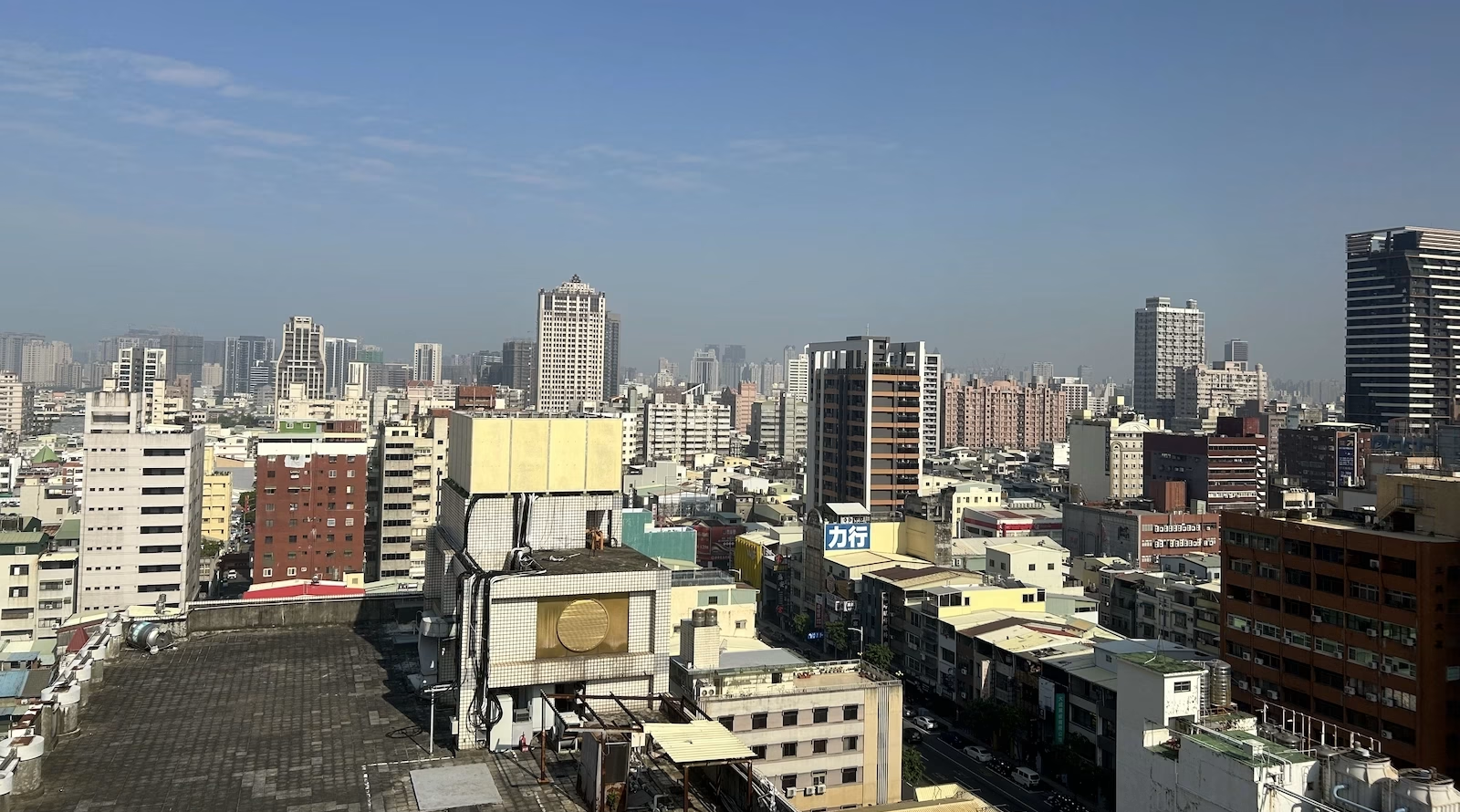
Kaohsiung’s laid-back charm, efficient transport, and delightful culinary scene make it a perfect addition to any Taiwan itinerary. In just two days, you can experience its highlights without feeling rushed or overwhelmed. My journey with my partner through this city was a wonderful prelude to further adventures. The next day, we were ready to go even further south of Taiwan, heading towards Hengchun, the gateway to the stunning Kenting National Park. So, watch out for my next article, where I’ll delve into exploring more of Taiwan’s beautiful southern coast!
To recap, for an optimal Kaohsiung experience: prioritize the HSR for swift travel, embrace local eateries for authentic flavors, utilize the EasyCard for seamless public transport, and allow yourself to wander and discover the city’s quieter charms. Kaohsiung is a testament that smart travel isn’t just about ticking off famous landmarks, but about immersing yourself in the local rhythm and finding beauty in the unexpected. You now have the insider knowledge to explore Kaohsiung like a seasoned traveler, ready to make the most of every moment.




